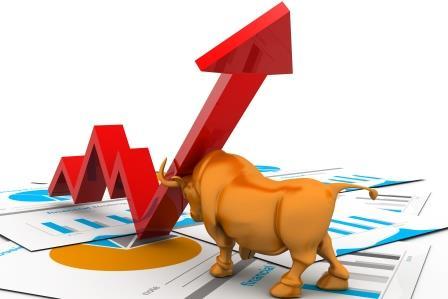The risk to growth in India may come from a likely US recession, which could happen by the end of 2022 or early 2023, feels V K Vijayakumar, Chief Investment Strategist at Geojit Financial Services.
“A US recession happening along with the ongoing slowdown in China and Europe can hit global trade and thereby India’s exports. But this, if at all it happens, is likely to affect India’s growth only in FY23. In FY22, 7.2 percent GDP growth looks achievable,” he told Moneycontrol in an interview.
Vijayakumar, who’s a keen financial market observer and has written four books on economics, believes the worst for INR appears to be over. “The significant factors are FIIs turning buyers and the sharp correction in commodity prices, particularly that of crude,” he said. Edited excerpts:
Do you see a risk to India’s growth estimates for FY23 and FY24 as Morgan Stanley recently cut down its growth forecast to 7.2 percent and 6.4 percent respectively? Even FICCI has reduced India’s FY23 growth estimate to 7 percent on global crisis and inflation concerns?
India’s economy is showing great resilience and important leading indicators like credit growth, demand for 2-wheelers, passenger vehicles and electricity generation reflect a strong rebound in the economy. The risk to growth may come from a likely US recession, which may happen by the end of 2022 or early 2023. A US recession happening along with the ongoing slowdown in China and Europe can hit global trade and thereby India’s exports.
But this, if at all it happens, is likely to affect India’s growth only in FY23. In FY22, 7.2 percent GDP growth looks achievable. It is important to appreciate the fact that India’s growth projection for FY22 (World Bank) is 7.5 percent while for other BRICS economies, it is 4.5 percent for China, 2.1 percent for South Africa, 1. 5 percent for Brazil and – 8.9 percent for Russia. It is clear where growth and corporate earnings are going to come from.
With a significant depreciation, do you think the worst for the Indian rupee is over now?
The worst for INR appears to be over. The significant factors are FIIs turning buyers and the sharp correction in commodity prices, particularly that of crude. Since the dollar index is drifting down from its peak of above 109, FIIs are unlikely to sell significantly and may even continue to buy as they have been doing during the last few days. This will support the rupee. But in the near-term a further decline to Rs 81 to the dollar may happen, but not beyond that. RBI has enough ammunition to defend the rupee.
Do you think the current recovery in equity markets from fresh 52-week low is temporary or have we bottomed out?
In the near-term, it looks like, we have bottomed out. The 10 percent pull back from the June lows is impressive.
Financials and IT, which bore the brunt of FII selling, are attractively valued and therefore, can be expected to support the market. While largecap IT is undergoing margin pressure, midcap IT appears to be more resilient, going by the Q1 results.
Do you expect the US Federal Reserve to hike interest rates by 75 or 100 bps in July policy meeting? Also, what do you expect from Powell’s commentary?
We expect a 75 bps rate hike by the Fed. The commentary will continue to be ultra-hawkish till inflation starts coming down. This is already known and discounted by the market. But, a 100 bps rate hike, if that happens, might be a short-term dampener.
Do you think the worst related to global economic environment is already discounted in the IT space now? Is it the right time to bet on the sector?
Difficult to predict now. If the likely US recession turns out to be severe, tech spending by US firms will be impacted. But there are no signs of that now. Going by the commentary of top IT managements, there are no signals of declining demand yet.
If the Fed succeeds in engineering a soft landing of the US economy, the Indian IT segment will stage a smart bounce back. This will happen when the signals of a soft landing are visible.
Right now, the US economy is strong; unemployment is at very low level of 3.6 percent and corporate earnings are good. A slowdown is inevitable; but our base case is that the Fed will succeed in engineering a soft landing.
Are you still buyer in the auto space that rallied more than 30 percent in last four months?
The auto segment is set to grow on a sustained basis for a few years. Demand is impressive in commercial vehicle, passenger vehicle, high-end 2 wheelers and in exports in some cases. Since valuations have run up too much too fast there can be a pause. But long-term investors can remain invested and even buy on dips, particularly in companies which are investing heavily in the transition to electric vehicles.Disclaimer: The views and investment tips expressed by investment experts on Moneycontrol.com are their own and not those of the website or its management. Moneycontrol.com advises users to check with certified experts before taking any investment decisions.
First published in MoneyControl









